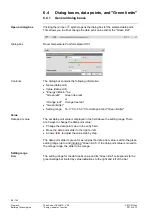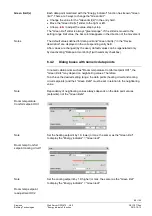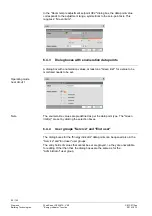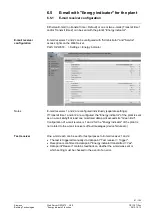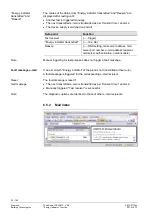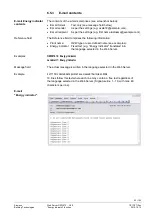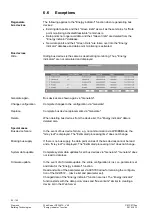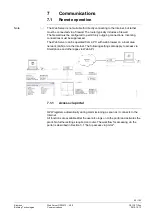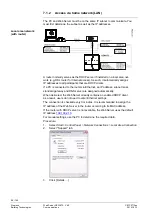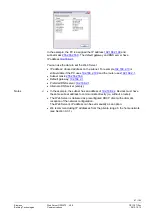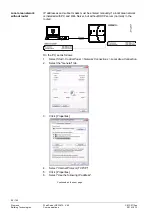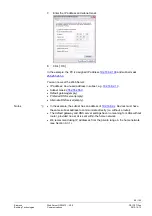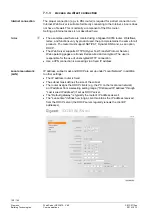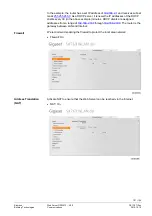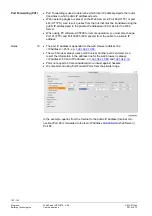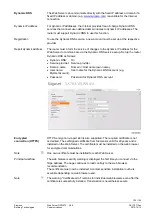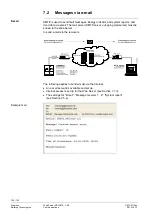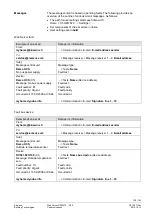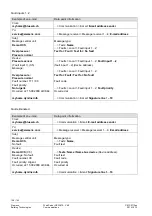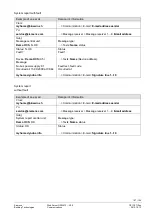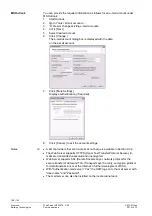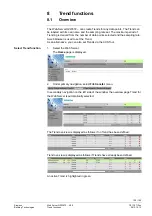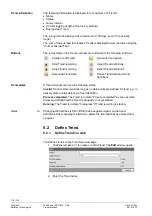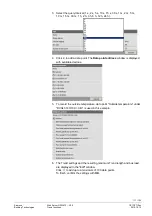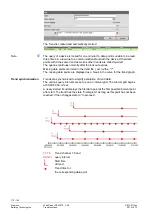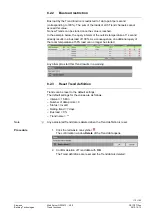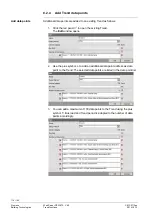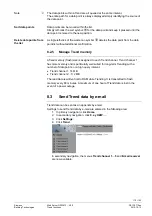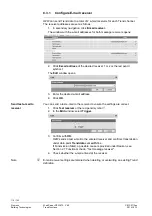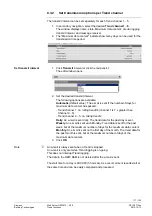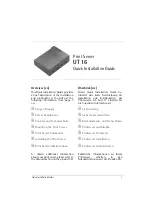
102 / 143
Siemens
Web Server OZW672... V6.0
CE1C5712en
Building Technologies
Communications
2015-10-13
·
Port Forwarding is used to determine which local IP addresses/ports the router
translates to which public IP addresses/ports.
·
Web operating pages are preset on the Web Server via Port 80 (HTTP) or port
443 (HTTPS). As a result, queries from the Internet must be translated using the
public IP address/port to the private IP address/port 80 or 443 for the Web
Server.
·
When using PC software ACS790 for remote operation, you must also change
Port 21 (FTP) and Port 50005 (ACS private) from the public to a private IP
address.
·
The port IP address is appended to the web browser address line:
<IP address>:<Port>, e.g.
122.104.2.10:80.
·
The web browser always uses port 80 unless another port is entered. As a
result, the information in the address line for the web browser is always:
<IP address>:80 and <IP address>, or
122.104.2.10:80
and
122.104.2.10
.
·
Ports not equal to 80 are considered more robust against hackers.
·
We recommend using Port Forward Ports from the private range.
In the example, queries from the Internet to the public IP address (Internet con-
nection)/Port 80 is forwarded to the local IP address
192.168.2.10
(Web Server) /
Port 80.
Port Forwarding (PAT)
Notes

